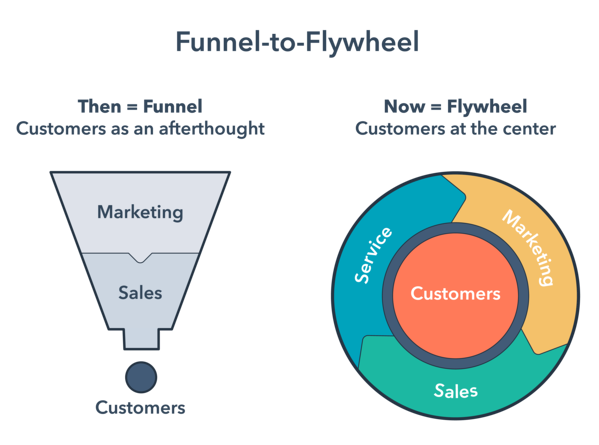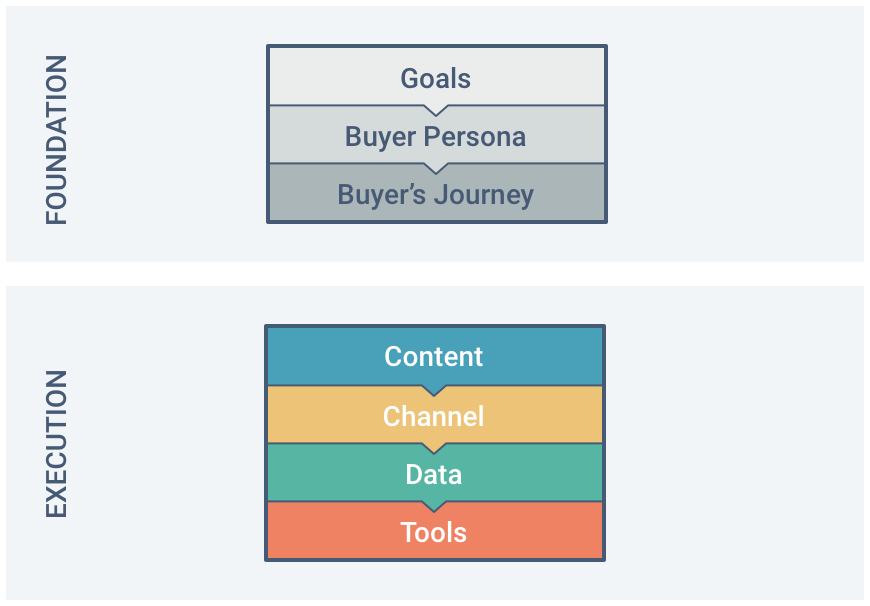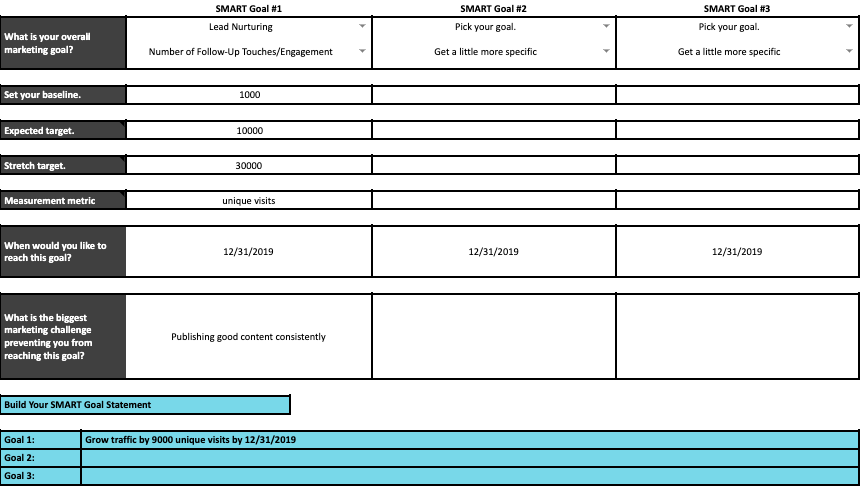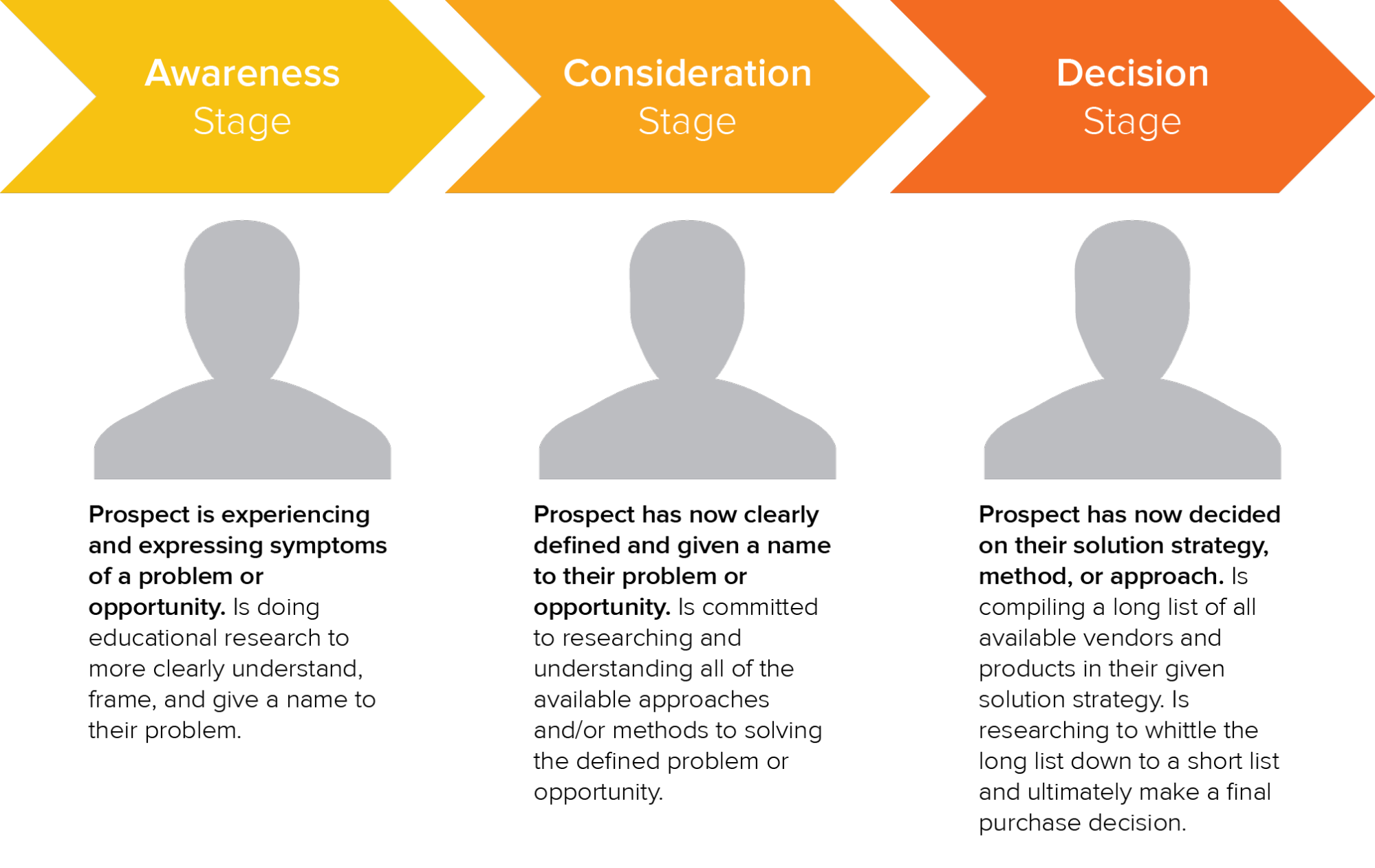The one thing that most businesses agree on is that acquiring new customers is a challenge. In the 2018 State of Inbound report, 69% of businesses highlighted customer acquisition as their biggest marketing challenge.
Acquiring new customers is not only hard, it’s also becoming more expensive.
According to HubSpot Research, the cost of acquiring new customers has increased by over 50% in the past 5 years.
So where does that leave you?
Well, first you have to understand why this has happened…
The first reason is that trust between businesses and their customers is at an all-time low. According to the new Trends in Customer Trust report by Salesforce Research, 54% of customers don’t believe that companies have their best interests in mind.
The second is that the way we buy things has changed. In an article published by Think With Google, they explain how customers narrow and broaden their search in unique and unpredictable moments, completely reshaping the traditional buyers’ journey.
While these might seem like big challenges to overcome, the good news is that they aren’t. Essentially understanding your customers hold the keys to acquiring new customers.
Now I know that this might seem like an obvious statement but let me explain...
By understanding the needs, expectations, goals, and challenges of your customers, you’re able to be a helpful resource, build valuable relationships (for them and you), and ultimately trust.
This also translates into understanding which channels they use regularly, what information they are looking for, and how they make decisions.
What is clear is that yesterday’s strategies won’t solve today’s problems. Businesses need to realign their focus by putting their customers at the centre of everything they do.
So we wrote this guide to help you understand customer acquisition. In it you’ll:
- Understand the importance of customer acquisition to your business growth
- Develop a customer acquisition framework for your business
- Learn to calculate your acquisition costs
- Learn how to measure the success of your acquisition efforts.
Without any further delay, let’s get started:
DOWNLOAD: The Complete Guide To Customer Acquisition.
Why is customer acquisition is so important?
Acquiring new customers is the key to the success of any business - it really is that simple. A little earlier I mentioned that customer expectations and buying behaviour has shifted, and that the only way to adapt is to put your customer at the centre of your efforts.
Allow me to introduce you to the flywheel:

Image source: HubSpot
Do you notice that your customers are at the very centre of this model?
The flywheel approach focuses all your customer acquisition and retention efforts around your customers and as you successfully acquire and retain customers, your flywheel starts to generate momentum that drives your business forward.
Your flywheel momentum is gained through the variety of marketing, sales and service activities you engage in to attract, acquire, and keep your customers.
READ: From Marketing Funnel to Flywheel. A step-by-step guide.
Customer Acquisition Framework
According to Verhoef and Donkers (2005) ‘’acquiring customers has become a more complex task than it used to be because each channel has specific characteristics’’.
This is, of course, very true. Your business needs to grow but working out how to scale your marketing activities while driving long-term value can be a difficult nut to crack.
This is why you need a framework that’s able to scale, is data-driven, and of course, generates ROI.
It should look like this:

The customer acquisition framework can be divided into two sections:
Foundation - This section revolves around understanding and aligning your marketing actions with the overall goals of your business and the customers your business is trying to attract.
Execution - This section is focused on execution. It starts by looking at what content you need to create and then looks at the channels it will get distributed through, the data you need to collect, and the tools needed to successfully execute your customer acquisition strategy.
Let’s take a closer look at the elements that make up each of these sections.
Are you looking for a comprehensive guide to understanding customer acquisition for your business? Download it now 👉 here.
Foundation Layer
1. Goals
Every marketing strategy begins with goal setting.
How do you know whether or not your marketing and sales activities have been successful if you never benchmark them against anything?
A study conducted by Bain & Company indicated that strategic planning tops the list of large corporate priorities.
That’s why we believe that setting goals provides a sense of direction and urgency to match the tactics you’ll use to get there.
We use the SMART methodology for this. We even have a nifty template to help you build those SMART goals.
Specific - your goals should be well defined, clear, and unambiguous.
Measurable - you need to use specific criteria to measure your progress towards achieving your goals.
Achievable - you need to ensure that you are able to achieve your goals.
Realistic - you need to make sure that your goals are realistic and relevant to your business.
Timely - you need a clearly defined timeline. Ideally, you will want to include your start and target date here.

At the bottom of the sheet, we like to develop a SMART goal statement. This process allows you to organise your goals in a way that makes sense to your business, but also provides a sense of direction for you and your teams.
DOWNLOAD: Content Marketing Strategy Template
2. Buyer Persona
In every business there is usually more than one type of customer or buyer persona.
A buyer persona is:
“semi-fictional representation of your ideal customer based on market research and real data about your existing customers.”
We need to profile them and collect as much data as possible in order to deliver a highly targeted customer acquisition strategy.
We do this by researching all their demographic data, their company data, and psychographic data.
These insights provide you with a holistic understanding of who your ideal customer is, allowing you to develop a strategy that’s highly targeted and specific.
As a part of this process we also like to understand what channels and devices they use and what kind of content they like to consume.
This information helps build an effective data-driven marketing and sales strategy.
Okay, so you now you know your buyer persona. Next up is understanding the buyer’s journey.
3. Buyer’s Journey
The buyer’s journey refers to the process people go through before making a purchase. At each phase of the buyer’s journey, customers are trying to understand their problem, the solutions available, and the best service providers available.
Below is a diagram of the buyer’s journey.

Image source: HubSpot
Awareness - During the awareness phase of their buyer’s journey, potential customers realise they have a problem and are doing research to try to define what it is.
Consideration - During the consideration phase, prospects are conducting research to understand what solutions might be the best for them.
Decision - During the decision phase, prospects are shortlisting brands and service providers, ultimately whittling it down until they make their purchase decision.
Understanding the phases of your customer’s buyer’s journey is an essential element of the customer acquisition framework. Without it, you have no context of what information potential customers are looking for and the questions they might be asking.
The phases of the buyer’s journey dictate the type of content you need to create and how it should be distributed.
Execution Layer
We call it the digital marketing stack.
It’s the combination of the tools and activities you need to successfully execute your digital marketing strategy and achieve your business goals.
The digital marketing stack is composed of four layers:
1. Content
Content forms the foundation of all marketing activities. Whether audio (podcasts), visual (video), or written (blog posts, press releases, ebooks, case studies etc) content is at the heart of every customer interaction.
This is where the buyer persona research, you did earlier, comes in handy. Content creation should be the result of a clear understanding of the needs and challenges of your ideal customer and their buyer’s journey.
Blog posts are great for the early-stage research prospects do to understand and frame their problem. Webinars can give you a platform to help educate prospects during the consideration phase while video testimonials and case studies during the decision stage while prospects are comparing you against your competitors.
Let’s take a look at a real-life example from the popular graphic design tool, Canva.
Their content marketing team leverages content partnerships with companies who share the same sort of audience, such as HubSpot and Buffer.
A content marketing strategy along with word-of-mouth has helped Canva acquire 10 million users per month.
Here are some more stats that really show you the value of content marketing:
- It costs 62% less than traditional marketing.
- It boasts a 6x higher conversion rate.
- According to HubSpot, 53% of marketers say blogging is their top content marketing priority.
- 54% of consumers would like to see more video from brands and businesses that they support.
DOWNLOAD: Content Marketing Strategy Template
2. Channel
Digital marketing channels can be defined in four broad categories using the PESO model:
- Paid - Pay per click (PPC), display advertising, paid social.
- Earned - Mentions in publications, guest blogging, organic search results.
- Shared - Social media, forums.
- Owned - Website, blog, email.
READ: Here’s why you need a content distribution strategy
Each channel defines the type and format of content required, the data it generates, and the tools required to execute the strategy effectively.
Your buyer persona research will highlight which channels your persona is more likely to engage with.
You then need to decide which channels will be worthwhile engaging in, in order to help you generate leads and acquire new customers.
3. Data
Collecting and analysing data is critical to understanding and optimising your customer acquisition efforts. There is no “one-size-fits-all” strategy in business and merely assuming what worked in the past will work again, is bound to lead to inefficiencies and missed opportunities.
Each channel and content type should define its own metrics but these also need to be viewed in the context of the goals you defined earlier.
Data helps you become more efficient by providing insights into each channel, allowing us to optimise our efforts and double down on what is working.
Data also helps you become more effective by focusing your efforts on the desired outcomes i.e acquiring new customers. If you aren’t achieving your goals then it doesn’t matter how efficient you are being.
DOWNLOAD: The Complete Guide To Customer Acquisition.
4. Tools
The tools and software required to develop and deploy your customer acquisition strategies is a layer of the digital marketing stack that is often overlooked.
If you want to understand and manage the relationship you have with your prospects and customers you need a CRM.
READ: The marketing manager’s guide to HubSpot
If you want to send out bulk email campaigns you need email marketing software.
If you want to collect and analyse your data you need a data analytics and reporting tools.
These are obvious examples but often teams have big ambitions for their marketing but, without having the right tools to successfully implement and maintain their campaigns.
Without proper implementation, all the work done up to this point is wasted. It’s also important to remember that in the digital world, where there is a tool for everything, you get what you pay for.
Not all CRMs are created equal and while different tools might boast similar features, price is often an indicator of quality.
Customer Acquisition Strategies
Customer acquisition strategies vary from industry-to-industry but when it comes to acquiring customers through digital channels then there are a couple of things every business should be doing.
Below are 5 customer acquisition strategies to kickstart your efforts:
1. Get started with paid
Paid advertising is the quickest way to start driving traffic to your website and although it can be an expensive channel it is the lowest hanging fruit in terms of getting things going.
According to research conducted by WordStream, 64.6% of people click on Google Ads when they are looking to buy an item online. It’s safe to say that utilising paid advertising can have great results.
The key here is to make sure your ads drive visitors to landing pages specific to their search term. If they land on a page that isn’t closely related to what they were looking for you will notice high bounce rates and low conversions.
2. Use email marketing to nurture your leads
An email marketing strategy is an effective way of nurturing prospects into leads and then into customers. In fact, 89% of marketers say that email is their primary channel for lead generation.
Lead nurturing is a way of helping prospects move through their buyer’s journey. Email is a great way to personalise your communication for the specific stage a prospect is in.
Here are a couple of ways that you could do that:
- Product update emails. You could develop a nurturing sequence that conveniently highlights the latest updates in your product or service offering. This is a great way of keeping existing customers engaged, but also for warming up some of your middle of the funnel leads.
- Additional resources emails. You could send potential customers additional resources to help them think through their problem based on where they are in your funnel and the sorts of content they have been engaging with.
- Newsletter emails. You could develop a monthly newsletter that highlights both industry trends, but also promotes some of your latest content offers.
Here are some top tips to consider as a part of your email marketing strategy:
- Segmentation. According to MailChimp click-through rates are 100.95% higher for Segmented emails than unsegmented emails.
- A/B testing. Testing multiple variations of the same email has the ability to improve your conversion rates, but also uncover what messaging and design resonates with your audience.
The key to any great email marketing strategy is that it needs to be targeted, personalised, and segmented effectively. Not to mention the importance of A/B testing your email assets.
READ: How to write emails that convert! Free template included.
3. Make sure your website is fast and mobile-friendly
Your website is your storefront. You need to understand what people see and effectively map out how your persona would navigate your site in a way that moves them a little closer to closing a deal.
You also need to consider how your website performance is affecting your conversion rates. Slow websites have high bounce rates and low search ranking which means less traffic and low conversion rates.
Even small improvements in site speed can have a big impact. Walmart found that for every 1-second improvement in page load time, conversions increased by 2%.
Make sure that your site is user-friendly, loads quickly, and is responsive on multiple devices.
DOWNLOAD: The Complete Guide To Customer Acquisition.
4. Create topic clusters to get your site ranking
Creating content is a great way to generate keywords that Google can rank your website for but how you connect your content together is equally as important.
Topic clusters are a collection of interlinked articles or pages around one umbrella topic. They ultimately allow you to provide greater visibility for search engines to identify your content.
Organising your content better makes it easier for search engines to understand and improves your rankings. This is essential for driving organic traffic to your website and ultimately acquiring more customers.
5. Create lots of great content
Content is at the heart of every marketing campaign and is essential to any customer acquisition strategy.
According to Marketo, 89% of customers do online research before making a purchase.
Everything your prospects read, watch, and listen to is content created by either you or your competitors and ultimately it’s the business that provides the highest quality, most informative content the most consistently that wins the sale.
Customer Acquisition Metrics
Fundamentally, the desire to acquire new customers is the desire to grow your business. While growth is great, its comes with a couple of hurdles.
Choosing between different campaigns and channels while ensuring the revenue generated from new customers isn’t exceeded by the costs of acquiring those customers can be tricky.
The key to making these decisions is measuring your progress. Below we dive into four metrics:
- Customer acquisition cost (CAC)
- Customer lifetime value (LTV)
- CAC/LTV ratio
- Net promoter score (NPS)
1. Customer Acquisition Costs (CAC)
We’re going to start with calculating your acquisition cost. Understanding this metric will give you the insights you need to grow your business in a sustainable way.
Customer Acquisition Cost (CAC) is the total cost of marketing and sales to acquire a customer. It is one of the defining factors in whether your company has a viable business model that can yield profits by keeping acquisition costs low as you scale.

Understanding what your CAC will help you make growth-driven decisions for your business. You can do this calculation for specific time periods which will help you measure the success of a specific campaign.
You can and should isolate activities to measure your success. For example: If you want to work out the CAC for your PPC activities then you’ll use the same calculation, the money you spent divided by the customers you brought in.
READ: Customer Acquisition Cost: Why it’s so important for business.
This allows you to analyse each of your marketing channels, what you’re spending on each of them and how much each customer you acquire costs you.
2. Customer Lifetime Value (LTV)
In isolation, your CAC can be misleading. It looks exclusively at the cost of acquiring new customers and doesn’t take into consideration the return on investment (ROI) generated from those customers.
Calculating customer lifetime value (LTV) helps us balance this calculation. Your LTV is the average amount of money your customer will spend over their entire relationship with your business.
This calculated by multiplying the average number of purchases customers make with the average price of each purchase.

Your LTV in relation to CAC will help your company adequately measure how long it takes for your company to recover from the investment you make to acquire a new customer.
It also ensures that your customer acquisition strategies are sustainable and contributing to your company’s profitability.
DOWNLOAD: The Complete Guide To Customer Acquisition.
3. CAC/LTV Ratio
Understanding your costs and measuring the ROI generated from your acquisition efforts is important from an optimisation standpoint but do little from a prioritisation perspective.
Your CAC/LTV ratio is essential to help you prioritise which channels and customers you should pursue with your customer acquisition strategies.

Your CAC/LTV ratio also provides a little more clarity as your business takes on more complexity with different product offering, customer segments, and more campaigns. It does this by reducing both your costs and ROI to a single number that you can use to measure their performance with.
4. Net Promoter Score (NPS)?
Your Net Promoter Score (NPS) is a customer retention metric but also plays a vital role when measuring the success of your customer acquisition efforts. This is because customer retention is also an effective acquisition strategy.
According to the Bain and ROI Rocket 2017 Advocacy in Retail Study customers who are promoters spend 3.5 times more than those who are dissatisfied with your product or service.
And according to research conducted by the Temkin Group: loyal customers are 5x as likely to make a repeat purchase, 5x as likely to forgive, 7x as likely to try a new offering, and 4x as likely to refer.
So happy customers not only spend more but they also refer more new customers.
NPS offers you a simple metric to measure customer loyalty and satisfaction.
READ: Do you know what your NPS is? You should.
Ways to reduce your Customer Acquisition Costs
The data you’ve collected over time should have brought to light a number of things. It should have told you what’s working and what’s not.
In this section, we’re going to look at a few ways that you could look at reducing those acquisition costs for greater revenue growth.
1. Conversion optimisation.
Your entire website needs to be optimised for conversions. This means everything from landing pages, emails, and CTA’s need to be A/B tested to prove or disprove theories about your persona and their buyer’s journey.
Conversion optimisation should include:
- Design - This could include testing different CTA colours and gradients. You need to ensure that your CTA’s are eye-catching and stand out.
- Copywriting - Test variations of your copy. The more specific you are to your product or service the more likely a user will convert.
- Placement - The placement of CTA’s across your website need to be logical and mapped according to a specific journey.
DOWNLOAD: The Complete Guide To Customer Acquisition.
2. Focused customer retention efforts.
I came across AOL’s story recently and while these companies are no longer relevant, the story is.
Back in early 2000, AOL adopted an aggressive customer acquisition strategy.
More customers = revenue growth and market share.
This makes sense. They were in a highly competitive space and had to fight off competition from all sides. But there was a major shortfall in their model which their competitors took full advantage of.
They had no focus on customer retention, only acquisition. This left AOL with a customer satisfaction rating of only 32%, leaving the door wide open for their competitors.
It’s the reason no one says “AOL it”.
A business model that focuses on delighting and retaining its customers also costs less.
According to HubSpot’s 2018 Customer Acquisition Study it can cost up to 25x more to acquire a new customer than retain one you already have.
Key Takeaways
It’s important to realise that your customers new and old are at the centre of your business. A customer acquisition framework that leverages this will drive success and boost customer retention rates.
In order to grow your business in a profitable and scalable way, you need to think of your customer acquisition activities as a process. A process that can be assessed, analysed, and optimised to deliver better results.



